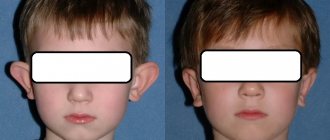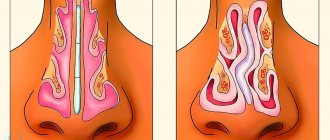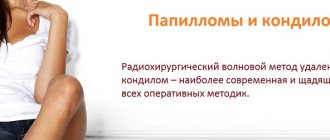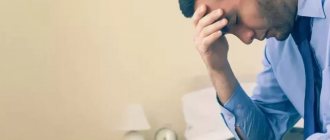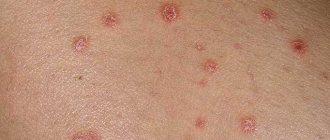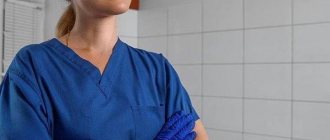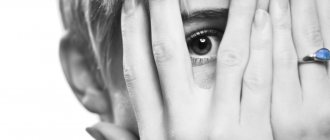Rhinoplasty is a complex operation, but it is very popular among patients. Due to its complexity, the recovery period takes a little longer compared to other types of corrections and requires some attention from both the doctor and the patient himself. First of all, this means 100% compliance with all medical recommendations and prescriptions to help the body recover faster.
The speed and characteristics of recovery are highly individual and depend on many factors. This includes the complexity and scope of the operation, the qualifications of the doctor, the correction method, the characteristics of the patient himself and much more. How long rehabilitation after rhinoplasty lasts is determined individually in each case, and it is impossible to give exact dates. But any recovery period can be divided into several stages.
First stage
The first week after nose surgery is the most unpleasant. At this time, swelling begins to increase, the peak development of which occurs approximately on the third day after surgery. There are pronounced pain sensations. Also during this period, the patient is forced to wear a plaster cast and a metal splint, which can cause slight discomfort. There are also silicone splints in the nasal canals: these modern devices allow you to breathe through your nose, but the sensation of a foreign body in the nose does not add additional comfort.
During this time, you should not touch the bandage, move it, or even remove it, even if it has changed its location. Successful rehabilitation after rhinoplasty largely depends on how carefully the patient follows the prohibitions and recommendations of the doctor. This could be taking painkillers or antibacterial agents, sleeping in a half-sitting position, and so on.
A small correction takes a short recovery time, improves aesthetics and preserves external individuality.
Rehabilitation after rhinoplasty
When planning to undergo nose correction at a rhinoplasty center, each patient must understand the complexity of the upcoming operation and what consequences he will face during recovery. Complete, maximally truthful information will save you from psychological trauma.
During the examination, Dr. Alexander Aleksandrovich Markushin always tells the patient in detail what to do so that the operation takes place without complications; what problems and difficulties await after the operation; how to speed up tissue regeneration; what you need to give up for a while to avoid side effects.
The more responsible the patient is to all the instructions of the attending physician, the faster the body recovers, swelling, bruising disappear, and sutures become scarred.
How is rehabilitation after rhinoplasty?
Depending on the complexity of the operation, rehabilitation lasts from 2-3 months to a year. Much depends on how a particular organism reacts to the operation, on the complexity of the tissue manipulations performed by the plastic surgeon, and on the strict implementation of all recommendations given by the doctor.
The photo shows how much his appearance has changed during rehabilitation. There are improvements every day.
The photo clearly demonstrates how the patient’s appearance changes over ten days.
Immediately after the surgeon’s work, it’s scary to look at your face. Extensive swelling, bruising, bandages fixing the splint are scary. The doctor is obliged to prepare the patient well for the operation so that the first days do not cause a serious psychological breakdown. An ideal way to explain how the changes will occur, to prepare the patient for the upcoming difficulties, and together with him to develop a 3D model of changes in the shape of the nose.
Modern PCs and new software allow you to perform any manipulations with your appearance on the monitor screen.
Dr. Alexander Aleksandrovich Markushin works individually with each patient, paying close attention to his physical and psychological preparation so that the operation is as comfortable as possible without complications.
By the end of the first part of the restoration process, the face acquires its usual appearance, and you can begin to use decorative cosmetics. Foundation will help hide yellow tints from bruises, but you need to remember that there is still a long way to go before full recovery and it’s too early to relax. It is possible to fully evaluate the work of a rhinoplasty surgeon only after 10-12 months, when the last traces of surgical intervention have disappeared.
What should you prepare for immediately after rhinoplasty?
The first hours are the hardest. The patient recovers from anesthesia. High-quality premedication helps to alleviate the condition. However, in any case, you need to prepare for discomfort. There may be dizziness, nausea, weakness, drowsiness.
The most acute negative sensations will disappear when the medications wear off. To suppress pain, prevent inflammatory processes, and reduce temperature, the patient must take prescribed antibiotics, analgesics, and other medications during the first day.
For each individual, a course is selected taking into account weight, body condition, age, and other factors that can influence recovery processes. No manipulation of the nose or surrounding areas should be performed. It is necessary to ensure complete rest, lie only on your back. Remove all discharge from the nasal passages with a slightly damp cloth, being careful not to press on the skin. The first stage requires maximum concentration from the patient, since it is the most difficult, painful, and unpleasant.
Second stage of recovery after rhinoplasty
This is approximately the first ten days. The mucous membrane gradually comes into order, and the regeneration of soft tissues accelerates. At the end of this period, the patient’s plaster splint is removed and the turundas that support the new shape of the nose are removed. When using non-absorbable threads, the sutures are removed. The attending physician carefully and carefully cleans the nasal canals, removing mucus and clots, while simultaneously checking how well the new contours of the nose are fixed.
The patient must be prepared that after the plaster is removed, the appearance of the nose will not yet meet his wishes. Swelling and bruises will spoil the appearance. Gradually disappearing swelling and bruises will make the contours of the new nose more prominent, clear, and beautiful. Starting from the second week of rehabilitation, you can move freely around the apartment, take walks or go to work. But only if the recovery process proceeds normally, there are no complications or side effects.
Swelling at this stage goes away by no more than fifty percent, so you need to treat small swelling and slight blueness normally. Much depends on the complexity of the operation, the chosen technique, the body’s reaction to certain medications, and the characteristics of the body. The right psychological attitude helps you to endure negative changes in appearance. Please understand that these are temporary inconveniences. Ultimately, a beautiful nose will be a reward for the unpleasant moments you have experienced.
The third stage of rehabilitation after rhinoplasty
No one can give firm guarantees that the body will recover strictly according to schedule after surgery.
The body reacts differently to surgery. In the third stage, recovery can take up to 12-15 weeks. Regeneration processes are accelerated. The correct regimen, strict adherence to the regimen, and compliance with all the doctor’s instructions for rhinoplasty have a positive effect.
- Swelling almost completely disappears, only small swellings are present.
- The shape of the nose becomes embossed, taking on the necessary contours.
- There is no trace of bruises, only a slight yellowness, which can be easily hidden behind a thin layer of foundation.
- The suture sites finally heal, leaving small marks.
This is not a complete restoration yet, but the appearance becomes more attractive. The recovery processes take the longest at the tip of the nose and nostrils. For now, there is no need to be critical of what you see. The main thing is to draw the rhinoplasty surgeon’s attention to pain or the appearance of new swelling, if any.
The fourth stage of the recovery period after rhinoplasty
It will take 10 to 12 months for the body to fully recover. After a year of rehabilitation, you can accurately see the result of the work after rhinoplasty. The nose took the shape conceived during 3D modeling. Appearance has changed dramatically. The appearance became as attractive as possible. If asymmetry appears, it means that the body did not react properly, or the wrong technique was chosen. In this case, a minor correction or revision rhinoplasty will be required. Completion of rehabilitation allows you to fully appreciate the professionalism of the rhinoplasty surgeon.
How can you speed up recovery after rhinoplasty?
Recovery of the body depends on the complexity of the operation performed. Changes on the wings or tip of the nose take the longest to heal. An important part of the recovery process is the general condition of the body.
A few simple tips will help speed up your recovery as much as possible.
Follow a diet that reduces the salt content in food to a minimum. No even weak alcohol or cigarettes.
The crusts in the nasal canals cannot be removed; they must fall off on their own.
Be sure to use ointments prescribed by the surgeon to speed up the regeneration process.
Plaster after rhinoplasty
The surgeon applies the patch to the nose before applying the plaster. Correct fixation of strips has a positive effect on the formation of the contours of the nose.
Plaster after rhinoplasty
The plaster is removed after 1-2 weeks. It all depends on the complexity of the operation performed.
Bandage after rhinoplasty
The bandage is removed along with the plaster.
Bruises after rhinoplasty
The bruises gradually disappear on their own. The process can take up to several weeks.
Preparations after rhinoplasty
They are prescribed by the attending physician taking into account the reaction of the patient’s body and the complexity of the rhinoplasty performed. Typically, an antibiotic, pain reliever and various other drugs are prescribed.
Diprospan after rhinoplasty
Diprospan is prescribed only by a surgeon, since it is necessary to carefully select the dosage.
Ointments and gels after rhinoplasty
They promote rapid tissue healing and are recommended by the attending physician, based on objective data of the patient’s condition.
Lyoton after rhinoplasty
Lyoton makes it possible to quickly get rid of swelling.
Troxevasin after rhinoplasty
Troxevasin is prescribed to quickly relieve swelling and get rid of bruises.
Traumeel after rhinoplasty
Traumeel is an excellent homeopathic gel that allows you to remove swelling and bruises in the shortest possible time.
Lidaza after rhinoplasty
Lidase stimulates regeneration, preventing the formation of hypertrophic scars.
Nose massage after rhinoplasty
Massage is done only according to the indications of the attending physician when cartilage seals appear.
Physiotherapy after rhinoplasty
To speed up recovery and improve blood and lymph flow in the tissues of the nose, the following physiotherapy procedures are often used:
- electrophoresis;
- microcurrents;
- phonophoresis;
- Darsonval.
Starting from the second week, all patients, without exception, are prescribed ultrasound. High-frequency waves strengthen the walls of capillaries, accelerate the resorption of scars and seals, prevent postoperative bleeding and reduce swelling.
Reviews from patients on rehabilitation after rhinoplasty can be found here
Second phase
This recovery period after rhinoplasty lasts about three weeks. The swelling is less pronounced, the pain is practically no concern. The plaster and splint are removed, and the splints are removed. The nose has not yet taken on a beautiful shape, but you can already lead an ordinary life without any fear - go to work, communicate with friends, and so on.
There is still some slight swelling. To speed up healing, the doctor may prescribe special ointments and gels - traumeel, badyaga, and so on. Injections with diprospan or compresses with dimexide may also be indicated to help relieve swelling. Please note that you absolutely cannot prescribe these procedures for yourself! It is very difficult for an unprepared person to maintain the required dosage, so there is a high risk of harming your health instead of relieving swelling.
Physiotherapy procedures, such as microcurrent or phonophoresis, may also be indicated. The rehabilitation time after rhinoplasty is determined individually.
When can injections be given?
PRP therapy (plasmolifting)
Skin restoration after plastic surgery on the face is facilitated by PRP therapy (plasmolifting)
.
Swiss plasma lifting RegenLab
is today considered the “gold standard” and one of the world leaders in injection cosmetology. Facelift (surgical facelift) eliminates deep wrinkles and ptosis of the face, but in itself it does not affect the quality of the skin. PRP therapy (plasmolifting) saturates the skin with platelets, triggering at the cellular level the processes necessary for rejuvenation from the inside (stimulates the synthesis of its own collagen, elastin, hyaluronic acid).
Do plasma lifting
it is possible already
3-4 weeks
after plastic surgery, sometimes earlier - it depends on the specifics of the surgical intervention, the recommendations of the plastic surgeon and cosmetologist.
PRP therapy
works well with facial lipofilling
, as platelet-rich plasma improves cell survival.
Third and fourth stages
Lasts from the second to third month after surgery. How long rehabilitation after rhinoplasty of the nose lasts largely depends on the type of operation - volume, complexity, and so on. Swelling and bruising become almost invisible, the nose takes on a more accurate shape and size. But it is still too early to talk about the final result. Recovery will take several more months.
The final result of the correction can be summed up approximately a year and a half after the intervention. But this does not mean that you will have to walk around with an unaesthetic nose shape throughout your entire life. Over the course of these months, the nose gradually decreases in size. This goes almost unnoticed both for the patient himself and for his environment. When rehabilitation after rhinoplasty is completed, we can talk about consolidation of the result and the final aesthetic results of the operation.
The final results are summarized no earlier than one year after the operation.
When can you exercise and have sex?
After rhinoplasty, you cannot play sports for about two or three months, as exercise increases blood pressure and provokes a rush of blood to the nose. This is not advisable. Sex after rhinoplasty is also contraindicated because it causes similar processes in the body as after playing sports. For the first three weeks you will have to abstain from carnal pleasures.
Experts do not recommend drinking alcohol after rhinoplasty, as this can negatively affect the patient’s health. These recommendations must be followed after rhinoplasty. If you do not follow the rules, this may affect the final result after the operation. Take proper care of your nose after rhinoplasty and the result will match your expectations of successful rhinoplasty.
How to speed up healing?
How long the rehabilitation lasts, the timing of tissue restoration - all this is determined individually. To shorten this period as much as possible, the patient is given a number of recommendations, for example:
- sleep in a half-sitting position,
- avoidance of salty and spicy foods,
- restriction of sports and physical activity,
- quitting smoking and alcohol,
- ban on visiting bathhouses, saunas,
- ban on hot baths,
- ban on solariums and beaches,
- restrictions on wearing glasses.
Thermal procedures stimulate blood flow to the affected tissues and delay their recovery. The same is true for physical activity, especially those involving bending the body or head forward, as well as alcohol and cigarettes. Therefore, to speed up healing, it is highly recommended to avoid these things. It is also undesirable to visit the pool, and the plaster cast should not be wetted even while taking a shower or other hygiene procedures.
What is strictly contraindicated during the rehabilitation period?
It is important to understand that rhinoplasty does not limit a person’s social life. But during the rehabilitation period it is necessary to take more care of yourself and your health. I always say that it is important to focus on your own feelings: it hurts, it’s uncomfortable - don’t do it, it doesn’t hurt and feels comfortable - do it.
So, what I do not recommend doing during the post-rehabilitation period:
- sleep on your stomach and side. Fans of this type of sleep will have to give it up at first;
- To wear glasses. In the early recovery period, it is worth switching to lenses;
- Do not lift heavy things;
- you need to avoid taking long hot baths and cold showers;
- Do not sunbathe in the sun or in saunas.
Complications
Rhinoplasty is a complex operation, so even the most experienced surgeon cannot guarantee zero risk of complications. In cases where noticeable deviations from the norm are observed during the rehabilitation period, you should immediately visit your doctor. This may include prolonged swelling, nasal discharge in the later stages, fever, general soreness, and the like.
Rehabilitation after rhinoplasty surgery has its own time frame for each patient and proceeds individually. But still, there is a certain variant of the norm, going beyond which is a sufficient reason to consult a specialist. Therefore, in any unusual situations, it is better to contact the surgeon who performed the operation.
Possible side effects
Any surgical operation carries risks. I openly warn my patients about all the risks and possible complications during consultation. But by entrusting rhinoplasty to professionals, the risks are reduced. Postoperative care and the surgeon’s willingness to resolve possible complications are also important.
Side effects after rhinoplasty include:
- callus,
- nasal deformity,
- tissue inflammation.
What else is important to know?
Recovery after rhinoplasty surgery largely depends not only on the qualifications of the surgeon and the success of the operation, but also on the actions of the patient during the rehabilitation period. Failure to comply with doctor's instructions, violation of requirements, ignoring prohibitions - all this will lead to dissatisfaction with the final result of the operation. On the contrary, careful adherence to all instructions will help to minimize the recovery time after rhinoplasty and get exactly the result that the patient expects.
Therefore, you should carefully follow everything the surgeon says. Rehabilitation is a long and not always comfortable process, but the results obtained are definitely worth all the effort.
Personal hygiene and nasal care
In the first days after rhinoplasty, you should not touch your nose, touch the stitches, change tampons without permission, or wet the plaster retainer. For three days, washing your hair and brushing your teeth is canceled. Subsequently, hygiene procedures are carried out very carefully. Using cosmetics for two weeks is not advisable. A doctor must give permission for this.
To cleanse the nasal mucosa from blood clots, secretions and mucus, soft turundas or cotton wool sticks are used. It is prohibited to blow your nose, as the pressure of the air stream easily deforms cartilage and bone structures.
The doctor will prescribe anti-inflammatory, antibacterial and wound-healing agents in the form of an ointment or gel, which should be used to treat the nasal mucous membranes daily. From a certain time, you can do daily rinsing of the nasal passages, acting very carefully and carefully.
The surgeon must say whether vasoconstrictor sprays or drops can be used. In some cases this is extremely undesirable, in others it is acceptable - rarely and in a minimal dosage. Violating recommendations and independently replacing some drugs with others is dangerous to health and can lead to dire consequences in terms of the outcome of the operation.
How to fix your nose without surgery
There are nuances when a person has a broken nose, when nasal breathing is impaired. This affects his health, but the cosmetologist cannot do anything here. And if you need to correct external signs, for example, some kind of depression on the nose, a hump, or raise the tip of the nose, then you can improve it very significantly without resorting to the help of a surgeon.
In my practice, there were situations when girls came from surgeons.
The surgeon told them: “Don’t bother, go to a cosmetologist and fix everything that you don’t like!”
The surgeon understands that what needs to be fixed is not worth the risks involved in the operation.
The procedure for non-surgical rhinoplasty is in demand and a very common question that arises during the procedure of rhinoplasty with injections: “How is it that you add volume with a drug, but the lips increase, which means the nose should increase, as well as the lips and cheekbones?
In fact, the nose visually shrinks because we add the drug at secret points, thanks to which the profile of the nose becomes neater, the nose becomes more upturned and the hump that visually enlarged the nose goes away. It turns out that in some places I am enlarging my nose, but visually it is shrinking! Here's the thing! It's worth a try if you need it.
CLICK on one photo to view the entire photo gallery
Do you need rhinoplasty?
Rhinoplasty surgery will allow you to:
- Reduce or eliminate nasal hump,
- Make the nose thinner (narrowing of the back, wings of the nose),
- Improve its shape (rhinoplasty of the tip of the nose, columella, nostrils, etc.),
- Make a long nose shorter (eliminate drooping nose tip),
- Enlarge a too small nose
- Correct nasal asymmetry (straighten the septum, bridge of the nose, etc.),
- Restore the original shape of the nose after injury (nasal reconstruction),
- Restore your breathing
- Correct the shortcomings of a previous operation (secondary rhinoplasty).
Results of the operation (RHINOPLASTY Before and After) View now
Nose correction - before and after 8
Non-surgical rhinoplasty – 8
A common reason for people seeking nose correction is unevenness of the nasal bridge. In profile and from the front, the nose can be perfect and chiseled, but in projection the half-cup has some irregularities that create the effect of a hump. For those who find this feature significant, injection rhinoplasty with hyaluronic acid fillers may well be indicated. The drug is administered at several points in such a way that the line of the nose from any point of view becomes ideal.
In this case, 0.6 ml of medium density filler was used. The procedure took 45 minutes including pain relief. The patient tolerated it very well. Rehabilitation lasted about 2-3 days (there was slight swelling on the back of the nose). The effect of the procedure lasts up to 1 year.
Cosmetologist's work:
- 0.6 ml medium density filler
- The procedure took 45 minutes
- Rehabilitation 2-3 days
- The effect of the procedure is up to 1 year
Advantages of rhinoplasty with Dr. Kudinova:
Ekaterina Sergeeva Kudinova is among the TOP 5 best specialists in Moscow in the field of rhinoplasty and reconstructive nose surgery. Patients from other cities in Russia and abroad often come to her clinic. Some turn to her to have their nose corrected by the best plastic surgeon in Moscow, others want to undergo complex reconstructive surgery or re-correction of the nose after a previous unsuccessful rhinoplasty.
Ekaterina Sergeevna Kudinova is not just a plastic surgeon who has extensive practical experience in performing all types of rhinoplasty, she is a recognized Russian expert in performing the most complex reconstructive surgeries of the nose and midface. Dr. Kudinova defended her dissertation on the topic of reconstruction of post-traumatic defects and deformities of the midface. For a long time she specialized simultaneously in plastic and reconstructive surgery of the face and nose, working under the guidance of the best Russian and foreign specialists in this field. If you are interested in the price of nose surgery in Moscow, open our price list or contact us by phone.
Over the past years, Dr. Kudinova has been a leading researcher in the department of plastic and reconstructive surgery at one of the leading medical centers in Moscow - the Federal State Budgetary Institution Scientific Center for Otorhinolaryngology. Here she performs the most complex plastic and reconstructive nasal surgeries for patients injured in accidents and accidents. Contacting her is the best solution if you need the best rhinoplasty in Moscow. Our prices for nose correction are quite reasonable.
If you want to find out how plastic surgery can help improve the appearance of your face, sign up for a consultation on the website or call.
Nose correction - before and after 9
Non-surgical rhinoplasty – 9
In this case, the patient wanted to reduce the severity of the hump and the drooping of the tip of the nose during facial expressions, in particular when smiling. Such corrections are possible using a combination of Botox + filler, or using one method. Here we only used filler. The photo shows how nose contouring allows you to change the profile - the nose becomes visually smaller, the tip of the nose is perkier, including when smiling, the girl’s facial features are softer.
This procedure took about an hour. It was performed under anesthesia with a special cream, and the patient tolerated it very well. The recovery period is 1-7 days, it depends on whether bruises appear after the injections. In the case of non-surgical rhinoplasty, bruises are rare. The effect in the case of a pronounced hump after the first procedure usually lasts up to six months, but the hump does not appear to the same extent, it just becomes a little more visible. After repeating the procedure, as usual, the effect lasts up to a year.
Cosmetologist's work:
- Pain relief with a special cream
- Effect up to six months
- The procedure took about 1 hour
- Repeatedly - Effect up to 1 year
Nose correction - before and after - 10
Non-surgical rhinoplasty – 10
In my practice, I often encounter patients asking me to correct two areas at the same time - the nose and lips. In fact, this option gives excellent results if there are indications for it. In this case, the patient’s “before” nose does not have a noticeable hump and is very neat. The need for correction arose because he sank down during facial expressions.
A very small amount of filler was used to correct the nose and we used the remainder of the product for light dynamic beauty of the lips. The result in both areas was more than natural and the patient was satisfied. The procedure, including anesthesia, took about an hour. Rehabilitation takes up to 7 days, as the lips react to injections with swelling and bruising. The effect lasts up to a year.
Cosmetologist's work:
- Pain relief with a special cream
- Effect up to a year
- The procedure took about 1 hour
- Rehabilitation up to 7 days
Nose correction - before and after 1
Non-surgical rhinoplasty – 1
In this case, a young girl asked whether it was possible to correct a hump on her nose and raise the tip of her nose without surgery. She was also concerned that the tip of her nose droops quite far when she smiles. During the examination, it became clear that correction with filler is possible and the result will be sufficient. The drug was selected in a small volume and medium density.
The procedure is performed under local anesthesia with cream and is tolerated comfortably. The result is visible immediately. Slight swelling and bruising may occur, but is rare. The effect lasts 6-12 months, after repeated correction up to 18 months.
Cosmetologist's work:
- fix hump
- without surgery
- filler correction
- under local anesthesia
- Effect 6-12 months
Nose correction - before and after 6
Non-surgical rhinoplasty – 6
A fairly common situation is when a whole syringe of filler for nose correction turns out to be too much and we have the opportunity to refresh another area on the face. Mostly, patients choose the lips as the second correction zone. A small amount can make a very delicate correction, but in general, after working on the nose and lips, the face is truly transformed. Pay attention to the photo - the correction is not noticeable, but at the same time the lips have become more expressive, more sensual and positive, and the nose is visually shorter and looks neater on the face - more straight and upturned.
This correction was carried out using 1 ml of hyaluronic acid filler and took about 60 minutes. The effect will last for 8-12 months. Local anesthesia cream. The procedure feels comfortable. Rehabilitation in the nose area: 2-4 days, lips up to a week.
Cosmetologist's work:
- The correction is invisible
- Rehabilitation up to 4 days
- Effect 6-12 months
- Local anesthesia
- 1 ml filler
Nose correction - before and after 4
Non-surgical rhinoplasty – 4
The photo shows a great example of how a straighter and more even bridge of the nose can make the face more feminine and softer. Correct shadows, no recesses, no hump, the tip of the nose looks up - what could be more harmonious? This shape of the nasal bridge is an excellent basis for non-surgical rhinoplasty, that is, correction with filler based on hyaluronic acid.
The density of the drug is always selected during consultation - it can be a medium density or high viscosity gel. The correct selection determines the amount of the drug used, the usefulness of the effect, and its duration. The effect of filler is always temporary - 6-18 months, after repeated correction it lasts longer. The procedure is performed under local anesthesia, is tolerated comfortably, rehabilitation lasts 2-4 days.
Cosmetologist's work:
- The procedure is comfortable
- Rehabilitation 2-4 days
- Effect 6-18 months
- Anesthesia cream
Nose correction - before and after 5
Non-surgical rhinoplasty – 5
Doesn't the nose become wider after correction? This is a very common question. When we smooth out the hump or raise the tip, the nose does not become wider; on the contrary, in some places it even becomes thinner and more miniature. But when it comes to the need to correct the “full face”, that is, asymmetry, when the nose has moved a little to the side or there are some depressions, then with just a little correction the nose can become wider. But the plus is that no one will notice this, because a straight nose always looks more aesthetically pleasing than a nose with asymmetry, even if it is 1-2 mm wider at the back.
In this photo you can see how correcting asymmetry changes the nose and the overall perception of the face for the better. The effect lasts up to 6-18 months. Local anesthesia, cream. The procedure time is 45-60 minutes with consultation and anesthesia. It feels like it can be carried comfortably. Rehabilitation from several hours to 3-4 days.
Cosmetologist's work:
- The procedure is comfortable
- Rehabilitation up to 4 days
- Effect 6-18 months
- Local anesthesia
